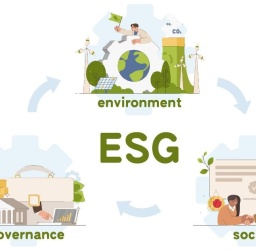What are the important steps in formulating an ESG policy

Formulating an Environmental, Social and Governance (ESG) policy involves creating a clear framework that guides a company’s operations, investments and broader business strategies in alignment with ESG principles. These principles focus on managing the company’s impacts on society and the environment, along with maintaining proper governance practices. Here’s how to approach formulating an ESG policy, using a series of steps that develop through engagement and lead to a well-considered policy which is actually put into action – not put into a file where nobody will even know it exists!!
Understanding ESG and identifying stakeholders is essential for a strong ESG policy. Grasping the ESG criteria is vital as they dictate a company’s impact on society, the environment, and its business responsibilities. This knowledge underscores their role in modern corporate ethics and sustainability. Stakeholder identification requires thorough analysis to pinpoint those – like investors, employees, and communities – most affected by or influential to an organisation’s actions. Recognising these stakeholders is key to grasping their ESG concerns, thus formulating a policy echoing shared values, bolstering transparency, accountability and sustainability.
Leadership engagement and commitment is fundamental to integrating ESG principles into a company’s strategy. Top management and board members must show deep commitment to ESG norms, setting a tone that resonates organisation-wide. This requires more than vocal support; it necessitates incorporating these values into strategic decisions. Additionally, establishing focused leadership or a specific ESG committee highlights its importance within the company. This group, accountable to senior executives or the board, is vital for sustaining strategic direction, accountability and continuous supervision of ESG efforts, guaranteeing they are prioritised and adequately resourced for successful execution.
Materiality assessment is crucial in devising an ESG policy, requiring thorough analysis to identify issues vital to a company and its stakeholders. This stage demands a detailed evaluation of risks and opportunities, acknowledgment of industry-specific challenges, and insight into effects on business functions. Its importance stems from assisting companies in prioritising essential aspects within the vast scope of environmental, social, and governance concerns, assuring the policy’s alignment with corporate strategy and stakeholder needs. By recognising and conforming to these substantial issues, companies can judiciously distribute resources, establish achievable, meaningful objectives, and crucially, weave ESG considerations into their fundamental strategic planning, thereby fostering sustainable value creation over the long term.
The establishment of goals, objectives and KPIs is vital in forming a sound ESG policy. After the materiality assessment, it’s essential to outline clear, quantifiable and timely goals resonating with international standards like the UN Sustainable Development Goals, enhancing the policy’s global standing. This stage anchors the policy’s strategic course, providing it with direction and an implementation roadmap. Simultaneously, crafting relevant KPIs is key. These tangible metrics facilitate the ongoing measurement of progress towards set objectives. This method ensures conformity with global standards and fosters accountability, transparency and continuous self-assessment within the organisation, strengthening the policy’s basis.
EXPLORE ALL TRAINING OPPORTUNITIES BY EIMF
Policy development is a critical step in creating an ESG policy, entailing the drafting of a document that clearly states the company’s values, principles, and ESG commitments. An impactful policy goes beyond general pledges, including detailed guidelines or behavioural standards covering all ESG aspects. Crucially, it must align with existing company policies to prevent discrepancies and encourage synergy throughout business practices. This holistic strategy confirms the policy is not a standalone declaration but integral to the company’s comprehensive strategy, thereby improving its feasibility, relevance and compliance, and endorsing a company-wide dedication to sustainability and ethics.
The step of Integration into Business Practices is essential for operationalising an ESG policy. This phase demands the full assimilation of ESG principles into the business model and overall corporate strategy, indicating that ESG considerations are central, not supplementary, to business decisions. This comprehensive method may call for significant modifications in areas such as operations, supply chain, employee programmes, and investment choices to match ESG commitments. Consequently, the company moves from policy to action, ingraining sustainability and ethical responsibility within its core ethos and daily operations, thereby strengthening the business’s resilience and trustworthiness amid changing global standards.
The Training and Communication phase is crucial for the effective deployment of an ESG policy. Comprehensive training for employees and management on ESG issues is vital, providing insight into the policy’s details and everyone’s role in its enactment. This understanding ensures a cohesive approach to sustainability goals. Simultaneously, transparent communication of the policy to all stakeholders is essential. Beyond mere informing, this step requires making the policy understandable, accessible and clear, boosting stakeholder trust in the company’s ESG efforts. Such strategic communication enhances the policy’s prominence and reasserts the company’s commitment to sustainable methods, encouraging shared responsibility and initiative.
The phase ofImplementation and Action Plans is vital for moving from ESG policy theory to execution. It involves creating specific action plans that outline the routes to achieving ESG goals, clearly stating resource commitments, responsibilities of involved teams or departments, and definitive timelines. This detailed planning underpins structured efforts towards relevant targets. Subsequently, the real commencement of initiatives within the ESG framework occurs, marking the company’s shift from strategic planning to concrete measures. Through these coordinated actions, the company embodies its sustainability agenda, solidifying its stance as a conscientious corporate entity.
Monitoring, Reporting, and Disclosure are vital in solidifying a robust ESG policy. This phase involves ongoing monitoring and evaluation of performance against set KPIs and goals, essential for assessing initiative effectiveness. Additionally, companies should prepare in-depth reports following recognised standards like GRI, SASB, or TCFD. Sharing these reports with stakeholders is crucial, enhancing transparency and creating an accountability culture, ensuring the organisation’s ESG approach stays consistent with its commitments to social responsibility and sustainable development.
The Review and Continuous Improvement stage is the final step in developing an ESG policy, essential for maintaining its effectiveness and relevance. It requires regular assessments of the policy, examining its success in meeting set objectives. These reviews prompt informed revisions to the policy, integrating new best practices, current trends, stakeholder input, and performance insights. This ongoing process is crucial for perpetual enhancement, allowing organisations to learn effectively from both triumphs and shortcomings. It thus secures the policy’s flexibility and alertness, strengthening the organisation’s dedication to environmental, social, and governance duties.
Related Training Programmes
18/12/2023 - DFSA Regulatory Compliance CPD Programme
14/12/2023 - A Deep Dive in to the EU AML Legislative Strategy
14/12/2023 - MiFID II and Sustainability
13/12/2023 - Unfair Commercial Practices in Financial Services
12/12/2023 - MiFID II Product Governance & Preparation of Key Information Documents (KID) of PRIIPs
07/12/2023 - Fraud Reporting under PSD2 – An Overview of the EBA Guidelines
06/12/2023 - Chartered Financial Analyst (CFA) Certificate in Environmental, Social, Governance (ESG) Investing
06/12/2023 - Market Abuse and Trade Monitoring
06/12/2023 - How to Coordinate a Whistleblowing Internal Investigation Report
05/12/2023 - Fintech Regulation and Policy
04/12/2023 - Transaction Monitoring Regulatory Framework for Electronic Money and Payment Institutions (EMIs/PIs)
29/11/2023 - CySEC Regulatory Reporting for Boards: Going Beyond Compliance
Share:
Διαβάστε Επίσης
Πρόκειται για εκθέσεις που καταγράφουν με διαφάνεια τις επιδόσεις μιας εταιρείας
Στόχος είναι η συνολική ικανότητα παραγωγής στρατηγικών τεχνολογιών μηδενικών καθαρών εκπομπών
 Ελληνικά
Ελληνικά  English
English


